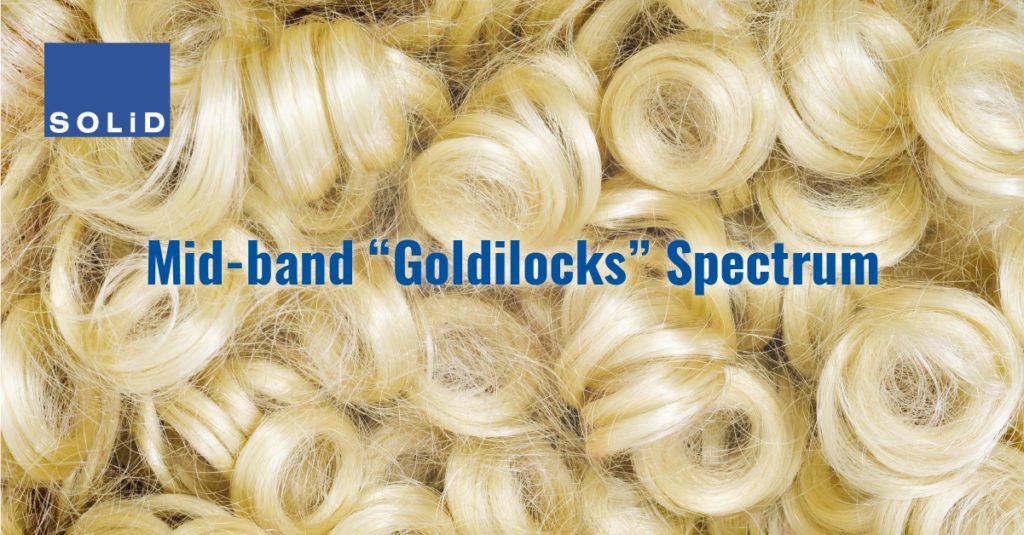
The ongoing evolution of mobile technology has underscored the critical role of mid-band spectrum in delivering superior 5G experiences. Offering an optimal balance of speed, capacity, and coverage, mid-band spectrum is essential to supporting the surging data demands of global users. Regulatory bodies and network operators recognize its importance, strategically acquiring and deploying mid-band spectrum to power the next generation of mobile broadband services. This strategic emphasis highlights the mid-band’s pivotal role in advancing 5G networks, promising faster and more robust mobile internet connectivity.
Advancements in communications technology enable ever faster, seamless mobile connectivity to satisfy the insatiable demand for data. To keep up, the FCC recently held yet another auction for RF spectrum licenses — the agency’s third-largest spectrum auction ever, in terms of the amount generated in winning bids. The new spectrum that the FCC released, which encompasses 3.45–3.55 GHz, is known confusingly as Auction 110, Andromeda, and Lower n77.
The Auction 110 band occupies a slice of the RF spectrum in the mid-band. The mid-band spectrum available for mobile communications in the United States spans roughly 2.5 to 4.2 GHz. Because the mid-band supports larger channel bandwidths without sacrificing reach, they are considered ideal for 5G services, offering an optimal mix of speed, capacity, and coverage that is particularly well-suited to densely populated areas where connectivity demands are high.
Winners and Losers
Due to the significant potential to improve 5G service delivery with the mid-band spectrum, there is a battle brewing for supremacy among leading mobile network operators (MNOs). In the latest skirmish, the big winners who walked away with the most spectrum licenses were AT&T and DISH Network, followed by T-Mobile, US Cellular, several private equity companies, and regional telecom service providers.
The Auction 110 license winners plan to begin transmitting over these new bands later this year and into 2023 as the race to deliver new 5G services heats up. We anticipate unusually rapid deployment, with the initial emphasis on high-capacity macro networks. However, before they can take advantage of the new spectrum, MNOs first need to purchase and deploy a new radio infrastructure capable of broadcasting signals in the 3.45–3.55 GHz band.
On the other hand, most subscribers will not need to purchase new 5G devices, as currently available smartphones operating in the C-Band support the full n77 bands, including the mid-band Auction 110 spectrum. In fact, for the average mobile subscriber, 5G is perceived to be a monolithic service that should just work no matter what bands the service provider is using for transmission. And that means they expect excellent quality of service everywhere, even indoors.
Win the In-Building 5G War
As the FCC continues to release additional spectrum to meet the demands for 5G, MNOs and third-party operators need to keep pace with the latest technology or miss out on revenue. Likewise, when legacy in-building wireless systems cannot upgrade to support the new spectrum, infrastructure replacement is the only recourse to provide 5G mid-band signals in-building. This rip and replace scenario is an expensive and time-consuming prospect for those enterprises and building owners with outdated distributed antenna system (DAS) equipment.
Fortunately, SOLiD’s modular in-building DAS equipment upgrades quickly and easily to support new spectrum bands. In addition, the scalable SOLiD ALLIANCE Fiber2Antenna 5G DAS solution has the mid-band covered with advanced fiber to the edge technology. This architecture is convenient to overlay legacy systems that do not offer modular upgrades or support mid-band frequencies. SOLiD’s modular and scalable solutions cover all of the mid-band, including 2.5 GHz, C-Band, and the recently released Auction 110 band. Whichever bands an MNO requires, they won’t miss out on delivering lucrative 5G services to indoor subscribers.
Moreover, SOLiD provides the entire bandwidth in each frequency band to allow for maximum channel size, increasing speed and capacity. And because the SOLiD solution covers the whole band, all of the MNOs are covered, whether they won licenses at the lower end of the mid-band spectrum or the upper end. In other words, when MNOs, third-party operators, and building owners deploy SOLiD solutions, they can achieve the best in-building coverage available, allowing them to dominate the battlefield and win the mid-band war.